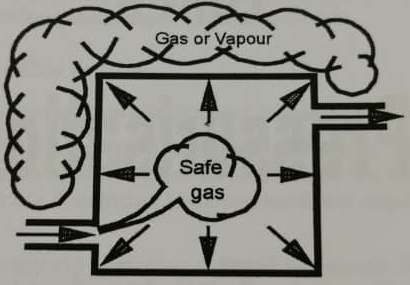Introduction #
Pressurisation is a simple explosion protection technique. If the interior of an enclosure is at a pressure slightly above that externally, any flammable gases around the enclosure will be prevented from entering the enclosure.
Components which are a source of ignition, (produce arcs/sparks or hot surfaces) are permitted within the enclosure. Safety is dependent on the maintenance of the safe gas.
The safe gas is the medium which ‘segregates’ the flammable gas from the source of ignition, and its continued presence will be confirmed by a certified control/monitoring system.
In the standard for this type of protection, IEC 60079-2, there are three types of pressurisations, px, py and pz.

Standards #
| Current constructional standards | |
| IEC 60079-2: 2014 BS EN60079-2: 2014 | Explosive atmosphere – Part 2: Equipment protection by pressurised enclosures ‘p’ |
| IEC 60079-13: 2010 BS EN60079-13: 2010 | Explosive atmospheres – Part 13: Equipment protection by pressurized room “p” |
| Codes of Practice | |
| IEC 60079-14: 2013 BS EN60079-14: 2014 | Explosive atmospheres: Part 14 Electrical installations design, selection & erection |
| IEC 60079-17: 2013 BS EN60079-17: 2014 | Explosive atmospheres: Part 17 Electrical installations inspection and maintenance |
Definition #
Pressurisation is defined as the technique of guarding against the ingress of the external atmosphere into an enclosure by maintaining a protective gas therein at a pressure above that of the external atmosphere.
Zones of use: Depending on the type, pxb, pyb or pzc (px,py & pz in the previous edition of 60079-2), pressurisation may be used in Zones 1 & 2, or locations that require EPL Gb (ATEX Cat.2) or Gc (Cat.3).




